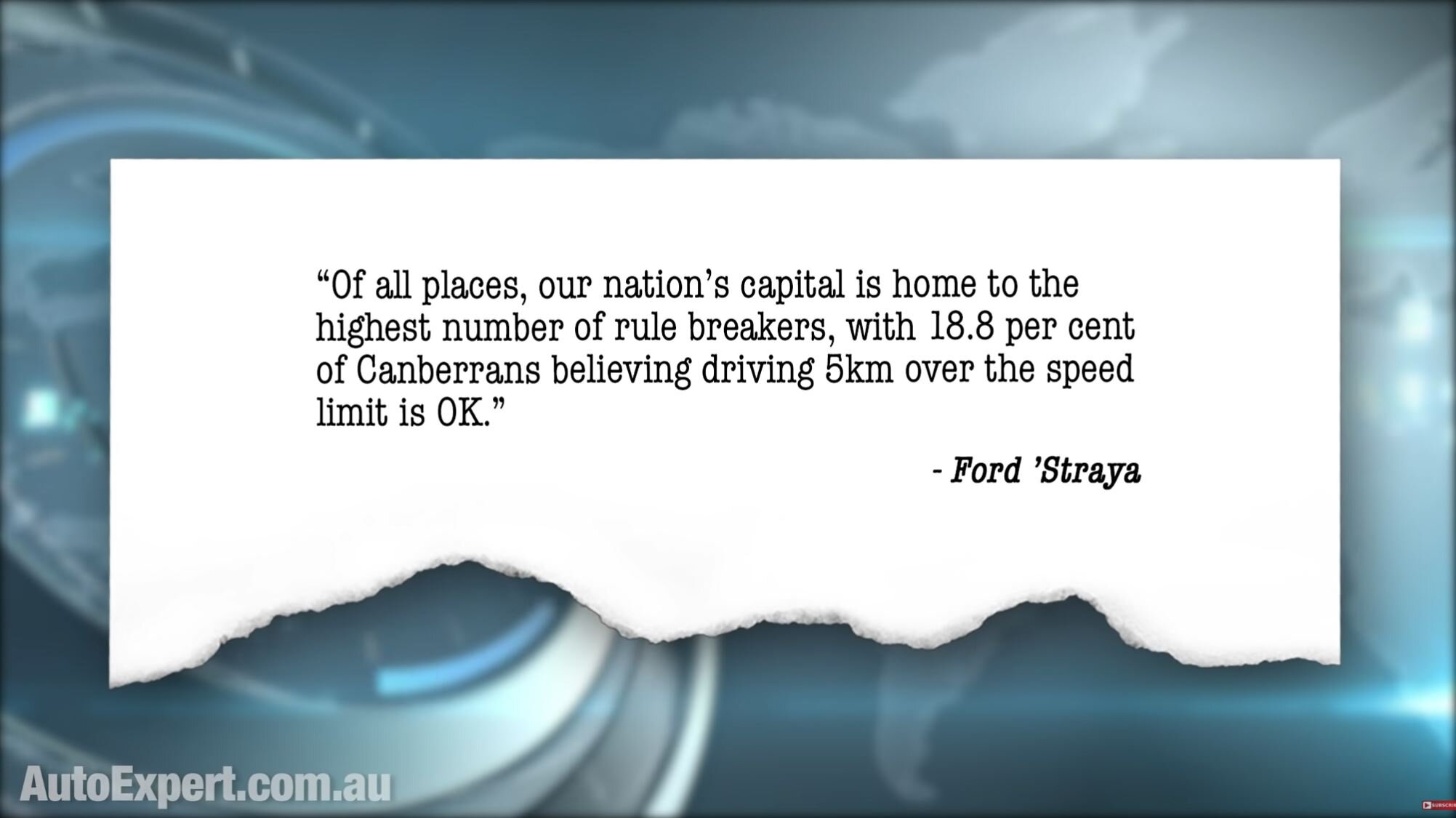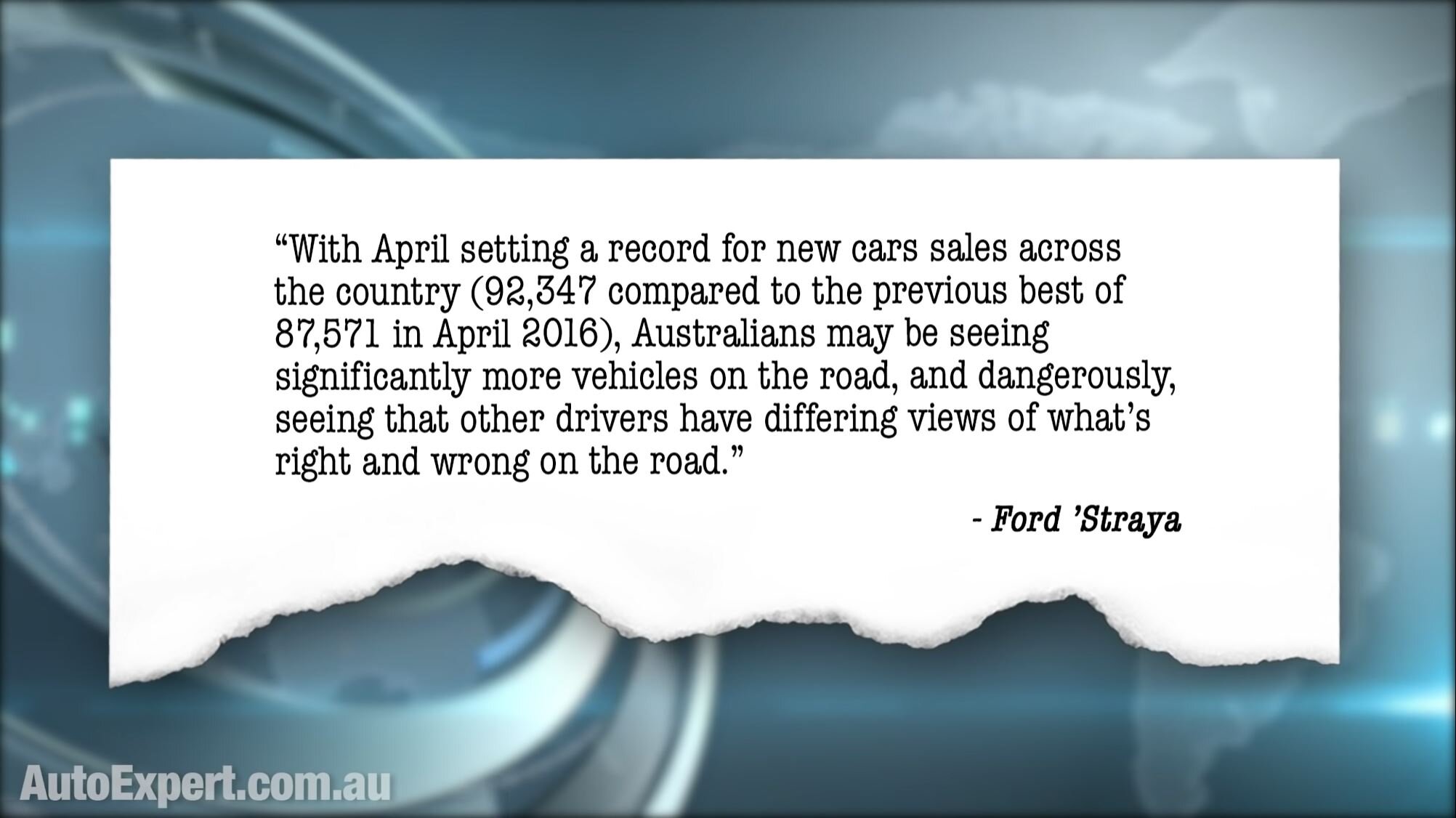Ford Australia Fails Road Safety Survey Credibility Test
Where does Ford Australia find the time? Honestly, this is some of the company’s finest external communications work to date…
Let’s get right to it. Ford Australia recently erected a dam across the mighty Bullshit River, of which the fabled Dingo Piss Creek is a prime tributary.
I think we owe it to them to open the floodgates:
Ford’s PR spin machine is on the redline there.
You can download the full official Ford press release here >> just so you can confirm I’m not cherry-picking here.
There’s nothing the media likes more than ‘new’ research. So, away they went, with the arbitrary regurgitation of one of the worst press releases of the year:
The Canberra Times, Are Media’s WhichCar, NewsChant and even SeniorDriverAus going for gold in the media spin Olympics.
I’d suggest there’s a difference between types of research.
On one hand you’ve got Carlo Rubbia and Simon Van der Meer isolating massive vector bosons in an antimatter containment bottle at CERN - click here for more >>
And on the other you’ve got paying a marketing company with a call centre to pester 1000 random people at dinnertime, to answer a handful of loaded questions about what they think about driving in Australia after COVID, in the name of road safety. Jesus.
One of these kinds of research will earn you the Nobel prize in physics. The other kind is, of course, just disgraceful, indefensible rubbish.
USEFUL LINKS ON SAFE DRIVING
What happens during a crash with feet on the dashboard? >>
Best tyre pressures for extended life, boosted safety and maximum grip >>
Anatomy of a holiday towing disaster: How you can prevent one >>
Epic towing disaster Q and A: Your trailer crash feedback and commentary >>
Is it actually safe to sit in row 3 of an SUV? >>
Left-foot braking in a modern car: What you need to know
My AutoExpert AFFORDABLE ROADSIDE ASSISTANCE PACKAGE
If you’re sick of paying through the neck for roadside assistance I’ve teamed up with 24/7 to offer AutoExpert readers nationwide roadside assistance from just $69 annually, plus there’s NO JOINING FEE
Full details here >>
Speed limits versus reality
Here’s where Ford’s PR starts to misconstrue so-called data and sculpt it into misinformation designed to make you think a certain way.
Let’s get a few things straight: The population of Australia is 25 million. Roughly half a million of them live in the ACT - presumably because they acted disgracefully in a previous life. Stop acting like a little bastard, Jimmy - otherwise you might grow up in the ACT.
So, if you poll 1000 Australians, and you do the whole pro-rata call distribution across the states and territories, per head of population, the ACT gets 20 calls.
Therefore, Ford gets a marketing company to call 20 people in Canberra, and we go from that to claiming: ‘18.8 per cent of Canberrans’ think going five kilometres over the speed limit is OK. Please. In what universe is that mathematically defensible, or demographically representative?
This whole survey is like having 25,000 employees, and interviewing just one of them. And then publishing your annual ‘employee satisfaction survey’.
Pro Tip: Obviously there are times when exceeding the speed limit is quite OK. Because the speed limits are all over the place, at times unclear and often don’t exactly fit the driving environment under which they are set for.
High profile case in point: Sydney Harbour Bridge. The mighty Coathanger.
The Coathanger has tidal traffic flow - so some lanes flow in different directions at different times of the day. No central divider separating opposing traffic flows. A head-on crash is dead easy. It’s that kind of road.
Just around the corner is Anzac Bridge, with much better civil engineering, a central divider, no tidal traffic flow. A better, safer road, pinned with a 60km/h speed limit. 10km/h slower than Sydney Harbour Bridge.
It’s functionally insane.
It’s certainly safe to exceed the speed limit at times. Not all the time, but at times. Not everywhere, but in some places. It’s always illegal. Not criminal, but illegal.
I’m not advocating you exceed the limit. I’m merely saying it’s not intrinsically unsafe at times if you do so, after carefully considering the balance of prevailing conditions.
Take school zones on arterial roads. At 3:59pm the limit is 40km/h. At 4pm the limit is 70km/h. If it’s 3:59 and there are no children nearby, in any situation that could be reasonably categorized as potentially hazardous proximity, is it safe to do 70? Sure.
The conditions at 3:59 and 4pm will be identical. And, of course, sometimes it’s going to be unsafe to do 70 at 4:15. Driving is funny like that, huh?
Anybody who claims they know all the road rules is either lying to you, or smoking crack. So it seems, using Ford’s bullshit metrics, 81.2 per cent of Canberrans are lying crack-smokers. And I think you’d agree - that explains rather a lot.
Look, dude, the Australian Road Rules is basically the template for the state-by-state road rules. You can find it at the National Transport Commission website. It’s a 342-page PDF. Like, print it out - it’ll stop a bullet.
I’ve read it, more than once (researching various stories for tabloid TV on ‘road rules you don’t know’ kinda thing) - and I doubt I’d get 100 per cent if they quizzed me at length. Nobody knows all the road rules.
That’s incorrect. April (2021) was not even close to an outright monthly sales record in Australia. April is generally a slow month for vehicle sales. We had a record April - sure - but 92,000 vehicles is far from a big deal.
The implication here is that an alleged surge in vehicle sales means a consequential tsunami of new vehicles on the road, and scary, dangerous traffic. If only there were times, historically, when vehicle sales exceeded 92,000 vehicles. We’d be able to look at the safety implications of that.
Take June of 2015: 125,850 vehicles (sold, in Australia). The following June: 128,569. The June after that: 134,000. And the next June (where are we now? 2018?) 130,000 vehicles. Then in 2019, in June: 118,000, and last year: 110,000.
Vehicle sales in Australia are routinely above 92,000. There is no correlation with road safety. All the research done on road safety - nobody has ever implied such a correlation. Like, every time sales exceed 90,000, it’s carnage out there. Come on. For a carmaker even to propose joining these dots is hilarious.
I wonder if the same thing applies to wearing trousers with differing levels of confidence, after a year of dressing in pyjamas, allegedly to work from home? Trouser-phobia could be a 2021 thing - perhaps we should do a survey, to confirm.
Every lazy press release needs a quote, and that one was from James Stewart, whom Ford Australia categorises as “Ford Australia’s Driver Education Lead”.
It is funny how he doesn’t categorise himself that way on his LinkedIn profile, where he says he’s a director of Driving Solutions, a driver trainer, an automotive event manager, a precision driver for film and TV, and experienced with a camera at both ends; “In front and behind”.
To driver training Jimbo, keep up the good work. Driver training is a hard gig, and COVID must’ve been hard. And it is important for people to develop the so-called ‘advanced’ driving skills, which are really just basic. #Respect.
But the traffic’s really just going back to being routinely poor, like before COVID, in the good old days. It’s just like riding a bike, only not as good for cardiovascular health.
Pro Tip: Driving is not even that dangerous. It’s just not. That’s the real story here, which nobody ever runs.
In Australia we drive more than 200 billion kilometres every year, and only 1200 people die. That’s a miracle. It’s like 30 trips to Pluto and back. Mobility is still not totally benign and never will be.
Despite the long distances, the remote areas, the third-rate civil engineering, the generally terrible driving standard, the distraction, the aggression, the incompetence, we are one of the safest countries on earth in which to drive. It’s called a ‘fact’.
Road safety in Australia is a cosy little club. A cottage industry. Nobody wants to tell you the roads aren’t that dangerous any more, because their funding might dry up, and they might not get an invite to the next conference on the Gold Coast.
We could make the driving environment safer. Wage war on distraction. Get the courts to take recidivist arseholes off the road for good. Spend more on roads and emergency medicine - especially in regional Australia. Improve the culture behind the wheel. Learn to be courteous and compassionate. That’s all it would take, frankly.
The top 8 ways to beat road rage (before road rage beats you) >>
If Ford actually wanted to improve road safety they could go back in time and refrain from releasing the Focus RS with its ‘any douchebag can drift’ mode. Such a safe feature. Thank god for all those designed-in head gasket failures keeping them in the workshop.
They could also re-engineer the Mustang, structurally, so it doesn’t actually crash so badly. You can independently verify this claim at Euro NCAP’s website if you want. Just go back in the press releases to 2017, quite entertaining, and also read the technical report on the crash tests.
Here’s a thought: Ford Australia could even hand back the $38 million it hoovered up from the taxpayer under the deeply flawed JobKeeper rort (before posting a $59 million profit).
JobKeeper fails the taxpayer and delivers more auto industry welfare >>
The $38 million is not going to help Australian drivers when Ford transfers it back to head office in Dearborn, Detroit. At least if the 38 million went back into consolidated revenue here, some of it might get spent on our roads, or other worthwhile pursuits.
On balance I think it’s fair to say Ford’s safety survey is rubbish and was probably designed to lunch off National Road Safety Week (16-23 May).
‘Research’ and ‘phoning 1000 people’ are quite different activities. Claiming one is the other is an insult to actual researchers, in my view.
Ford’s actual corporate conduct seems to be at odds with its claimed commitment to road safety. This is just spin. And it’s not even good spin. With an icing of fear mongering on top. ‘Aren’t the roads scary now, after COVID’, kind of thing.
If Ford put the $38 million back on the table, and this is purely a hypothetical proposition, but if they did, I’d change my view on this, and I think, so would many other Australians like you.
As things stand, well done highlighting just how eagerly the media will publish practically anything - without even cursory investigation or analysis.




















The Hyundai Palisade is a big, comfortable holiday machine for growing families and offers excellent value, generous 8-seat SUV space, and practicality on par with LandCruiser - but it’s $30K more affordable.